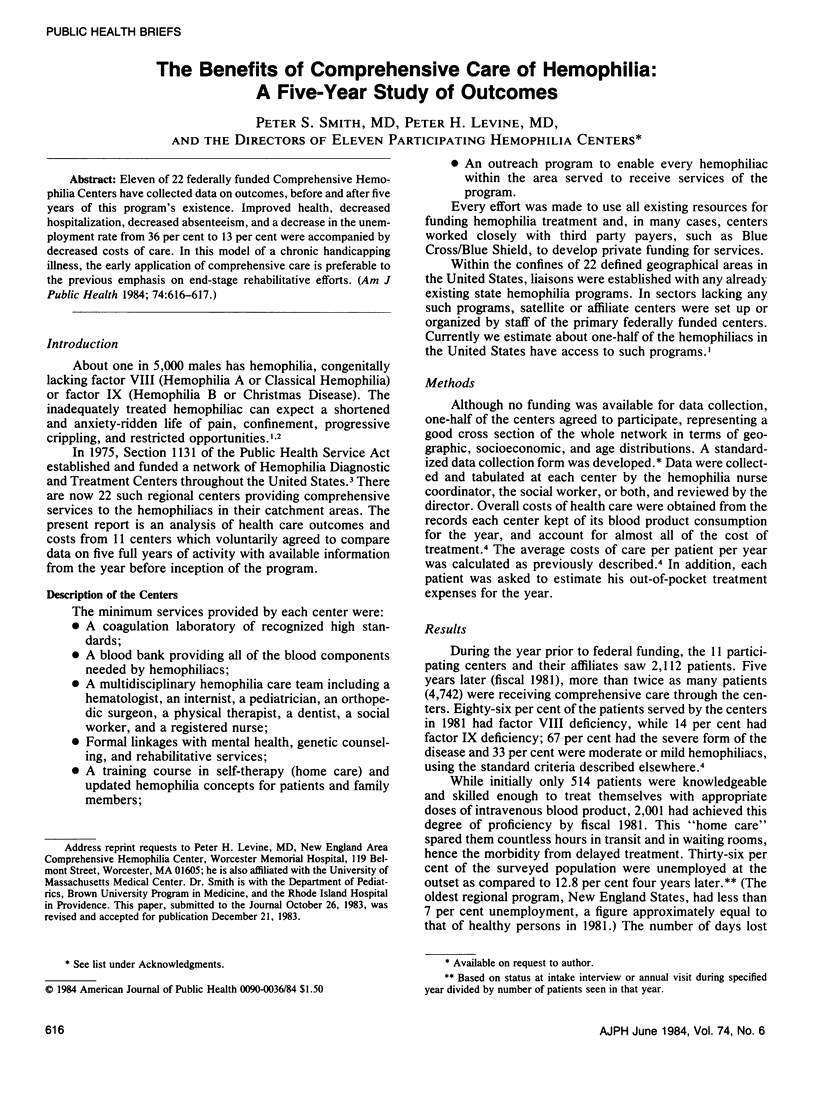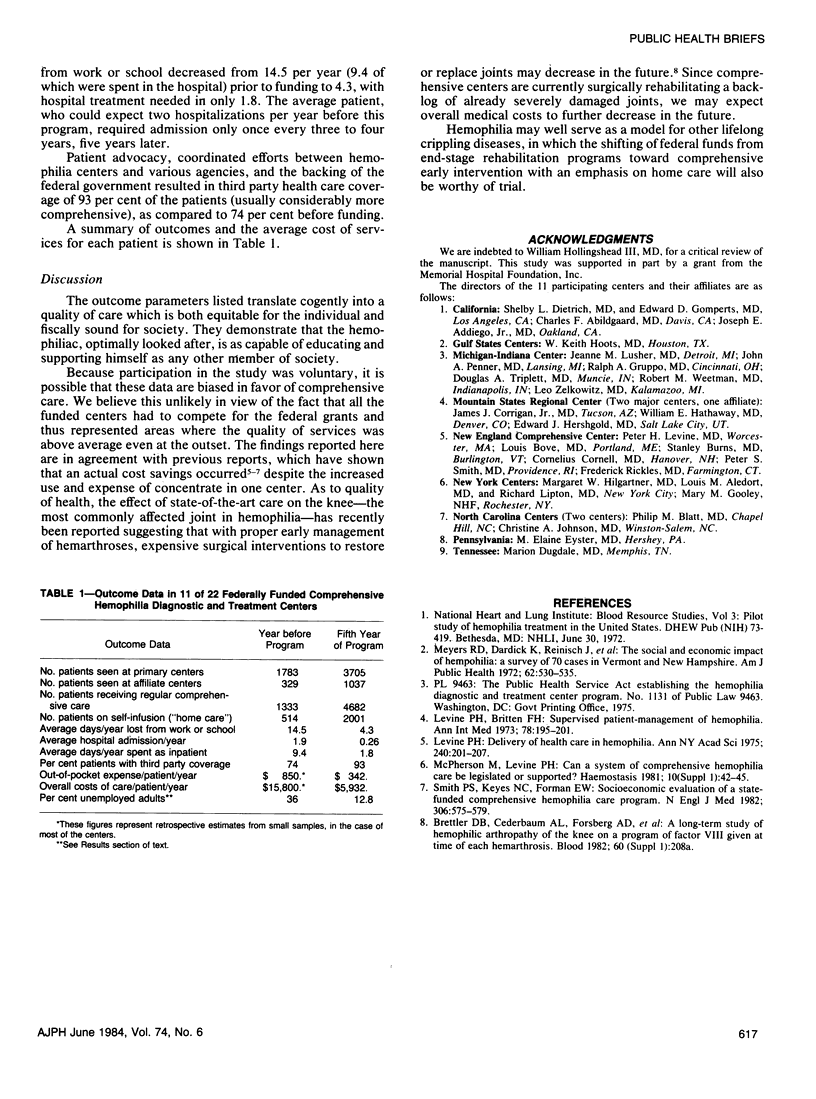Abstract
Eleven of 22 federally funded Comprehensive Hemophilia Centers have collected data on outcomes, before and after five years of this program's existence. Improved health, decreased hospitalization, decreased absenteeism, and a decrease in the unemployment rate from 36 per cent to 13 per cent were accompanied by decreased costs of care. In this model of a chronic handicapping illness, the early application of comprehensive care is preferable to the previous emphasis on end-stage rehabilitative efforts.
Full text
PDF

Selected References
These references are in PubMed. This may not be the complete list of references from this article.
- Levine P. H., Britten A. F. Supervised patient-management of hemophilia. A study of 45 patients with hemophilia A and B. Ann Intern Med. 1973 Feb;78(2):195–201. doi: 10.7326/0003-4819-78-2-195. [DOI] [PubMed] [Google Scholar]
- Levine P. H. Delivery of health care in hemophilia. Ann N Y Acad Sci. 1975 Jan 20;240:201–207. doi: 10.1111/j.1749-6632.1975.tb53346.x. [DOI] [PubMed] [Google Scholar]
- Meyers R. D., Adams W., Dardick K., Reinisch J., Von Reyn F., Renna T., McIntyre O. R. The social and economic impact of hemophilia--a survey of 70 cases in Vermont and New Hampshire. Am J Public Health. 1972 Apr;62(4):530–535. doi: 10.2105/ajph.62.4.530. [DOI] [PMC free article] [PubMed] [Google Scholar]
- Smith P. S., Keyes N. C., Forman E. N. Socioeconomic evaluation of a state-funded comprehensive hemophilia-care program. N Engl J Med. 1982 Mar 11;306(10):575–579. doi: 10.1056/NEJM198203113061004. [DOI] [PubMed] [Google Scholar]


